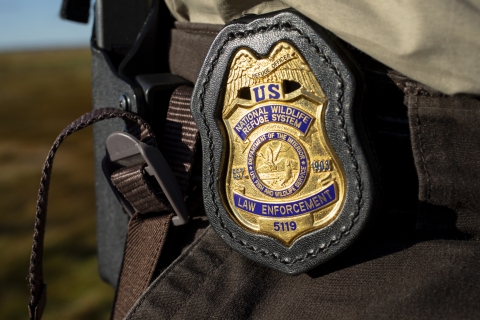What We Do
The National Wildlife Refuge System is a series of lands and waters owned and managed by the U.S. Fish and Wildlife Service. Wildlife conservation is at the heart of the refuge system. It drives everything we do from the purpose a refuge is established, to the recreational activities offered there, to the resource management tools we use. Selecting the right tools helps us ensure the survival of local plants and animals and helps fulfill the purpose of the refuge.
Management and Conservation
Refuges use a wide range of land management tools based on the best science available. Some refuges use prescribed fires to mimic natural fires that would have cleared old vegetation from the land helping native plants regenerate and local wildlife to thrive. Other refuges contain Wilderness areas where land is largely managed in passively. The management tools used are aimed at ensuring a balanced conservation approach where both wildlife and people will benefit.
At Grays Lake, water levels are the overriding factor affecting most habitat management strategies for nesting birds and wildlife. Current lakebed vegetation (bulrush, cattail, and robust sedge) is very dense. As part of the current CCP process, a range of possible alternative management approaches will be explored and evaluated.
Habitat
Although it is a natural lake, the water level on the refuge is regulated according to agreements with off-refuge interests. Habitat management on the refuge focuses on measures to benefit cranes and waterfowl. Vegetation is manipulated by hay cutting, cattle grazing, and controlled burns, creating feeding and nesting sites for a variety of bird species. An ongoing project at the refuge is developing more clearings, ponds, and islands in the "lakebed". More open water in the dense marsh vegetation benefits many nesting waterbirds and waterfowl.
Fire Management
The refuge uses prescribed treatments, such as controlled burns, to reduce fuel loads. This not only lessens the intensity and severity should a wildfire occur, but also returns nutrients to soil, stimulates new vegetative growth, and improves habitat for many birds and animals.
Law Enforcement
U.S. Fish and Wildlife Service law enforcement officers have a wide variety of duties and responsibilities. Officer’s help visitors understand and obey wildlife protection laws. They work closely with state and local government offices to enforce federal, state and refuge hunting regulations that protect migratory birds and other game species from illegal take and preserve legitimate hunting opportunities.
Laws and Regulations
Grays Lake NWR lands are closed to all public entry from April 1st through September 19th to protect nesting birds and their young. Uses such as hiking, cross country skiing, and snow shoeing are permitted on the North half of the Refuge from September 20th through March 31st. Waterfowl hunting is permitted in accordance with state seasons for ducks, geese, coot and snipe only.
